Understanding how credit card interest is calculated can often feel overwhelming, yet it is fundamental to managing your finances responsibly. Credit card interest can lead to significant debt if not monitored carefully, making it essential to grasp the various components that contribute to the total cost of borrowing. In this article, we will break down the elements of credit card interest, from interest rates to APR and beyond, providing you with the knowledge to better navigate your credit card use and reduce costs effectively.
Whether you are a seasoned credit card user or a newcomer, knowing how interest is calculated can lead you to make informed decisions. We will delve into crucial methods and terms, enabling you to recognize how various factors impact what you pay on your outstanding balance. Ultimately, our goal is to empower you to take control of your financial health.
1. Interest Rates: The Basics
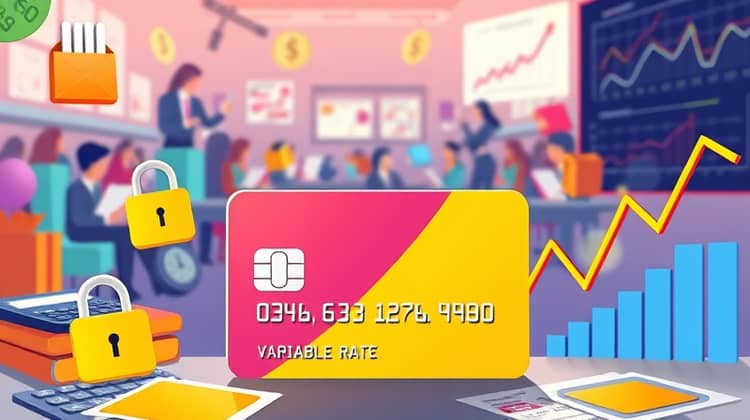
Interest rates represent the cost of borrowing money through a credit card. In essence, it is the percentage of the borrowed amount that the lender charges you for using their funds. Understanding how this rate works can offer critical insights into managing credit efficiently. Interest rates can be either fixed or variable, influencing how much you owe over time.
Fixed interest rates remain the same for the duration specified, while variable rates can change based on conditions in the broader market. Credit card companies often advertise their interest rates prominently, yet the true cost can vary based on an individual's creditworthiness and account usage. Knowing the difference is key to assessing the overall cost of a credit card.
- Credit cards typically have annual percentage rates (APR) specified for purchases, cash advances, and balance transfers. Each of these can vary, making it crucial to understand the specific rates for different transactions.
- Payment history and credit score can significantly impact the interest rate offered to you by lenders. A better credit score typically results in lower rates, while a poor score can lead to higher costs.
By getting a grasp on interest rates, you will be better equipped to choose a credit card that meets your needs. This understanding forms the foundation upon which other concepts, such as APR and methods for calculating interest, are built.
2. APR: What Does It Mean?

APR stands for Annual Percentage Rate, and it expresses the cost of borrowing on a yearly basis. It is essential to differentiate between the interest rate and the APR, as the latter includes additional fees and costs associated with obtaining credit. This metric helps individuals understand the total cost of borrowing more effectively than interest rate alone.
When applying for a credit card, understanding the APR can guide you in determining how much your purchases will ultimately cost over the long term. For instance, a card with a 20% APR means that for every $100 borrowed, you would owe $20 in interest after one year, assuming no payments are made during that period.
- APR can vary depending on the type of transaction. For instance, cash advances typically have a higher APR compared to regular purchases, which can lead to a faster accumulation of debt if not approached with caution.
- Credit card companies are required to disclose their APRs, allowing potential customers to compare different offers effectively. This transparency fosters a more informed consumer market.
Thus, familiarizing yourself with how APR functions empowers you to make informed borrowing decisions and helps minimize the long-term cost of credit card debt.
3. The Daily Balance Method

The Daily Balance Method calculates the interest charged on your credit card balance daily. This method takes into account your average daily balance throughout the month and applies your daily periodic rate to determine interest charges. When a billing cycle ends, the bank will multiply the average daily balance by the number of days in that cycle to derive the amount of interest owed.
- This calculation often benefits consumers who may pay off their balance before the billing cycle ends, as lower averages can lead to reduced interest payments.
- Understanding the Daily Balance Method can help you manage your payments more strategically, as paying down your balance earlier in the month can significantly decrease the total interest charged.
By being aware of this method, you can take proactive steps to minimize interest charges and make informed financial decisions.
4. Compound Interest: The Double-Edged Sword
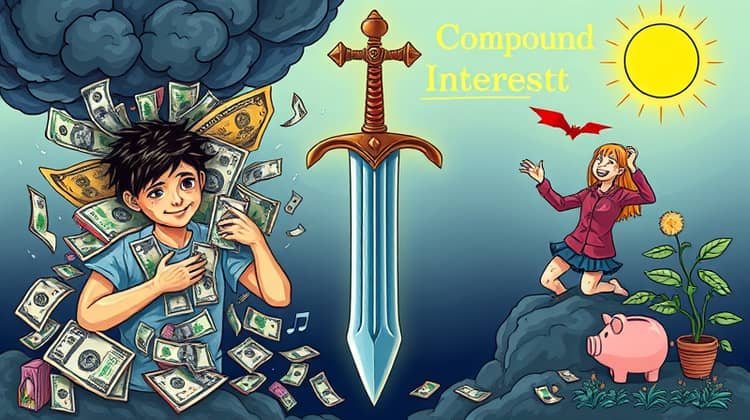
Compound interest can be both beneficial and detrimental, acting as a double-edged sword in financial management. When you owe money on a credit card, you're often charged compound interest on your balance. This means that not only do you pay interest on the original amount borrowed, but you also pay interest on the accumulated interest that has been added to your balance over time.
The impact of compound interest can be profound, notably increasing your total debt responsibilities. On the flip side, if you're earning interest on a savings account, compound interest can work in your favor, allowing your money to grow more significantly over time.
- Be cautious of how quickly debt can pile up due to compound interest; a balance of $1,000 at a 20% APR compounded monthly could become over $1,200 in just a year if left unpaid.
- Understanding your payment plan helps to gauge the eventuality of compound interest in credit situations, particularly identifying when to make payments to avoid additional charges.
Recognizing the nature of compound interest will help you make sound financial decisions regarding the use of credit cards and the maintenance of savings.
5. The Grace Period: Your Interest-Free Window

Credit cards often come equipped with a grace period, which refers to the time frame in which you can make purchases without incurring interest charges. Typically applicable if your balance is paid in full each month, the grace period can range from 21 to 25 days, allowing borrowers a significant reprieve.
To take full advantage of the grace period, it is essential to note that it only applies if the previous balance is paid entirely by the due date. If not, any carried-over balance may start accruing interest immediately, nullifying the grace period's benefits.
6. Cash Advances and Special Rates
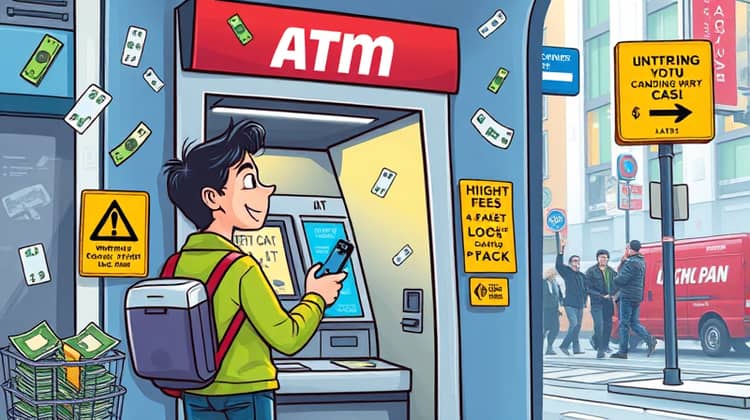
Cash advances provide immediate cash disbursement through credit cards but often come with higher fees and APRs compared to regular purchases. Moreover, there is typically no grace period associated with cash advances, meaning interest starts accruing immediately upon withdrawal.
Consumers should remain cautious when using cash advances, as they can quickly lead to substantial debt. Over time, the costs associated with cash advances add up significantly, making them an expensive option for accessing cash.]}
section_7{
7. Penalty Interest Rates
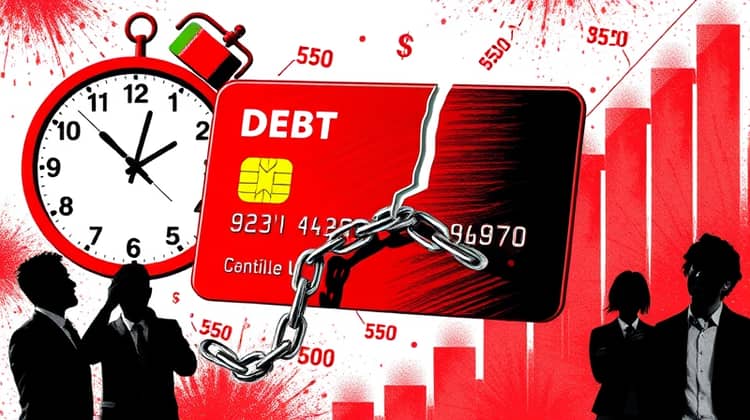
Penalty interest rates apply when a borrower defaults on their credit card agreement, typically after a late payment. Many credit card issuers will impose higher interest rates which can take you from a standard rate to an elevated rate in no time, sometimes exceeding 30%.
This increased cost can lead to a cycle of debt, making it more difficult to catch up on payments and recover good standing with the lender. Thus, it's crucial to understand the terms in your credit card agreement regarding late payments and penalty rates.
8. Factors That Affect Your Interest Rate
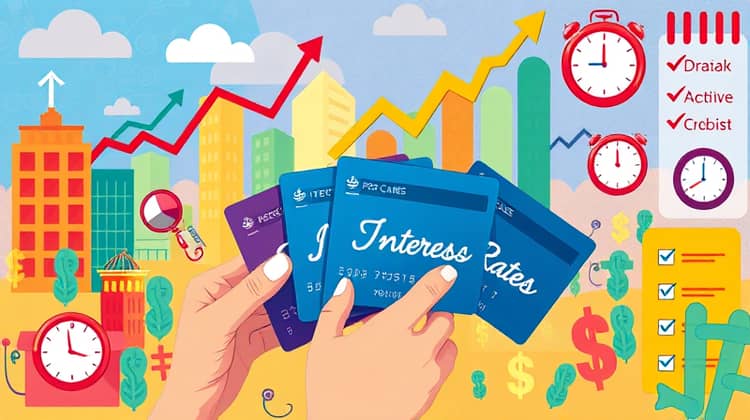
Various factors influence the interest rate you receive on your credit card, making knowledge of these elements vital for anyone managing their finances. Credit ratings, the overall economic climate, and the card issuer's policies can all affect the rates charged.
While a strong credit score often yields better rates, other circumstantial factors like promotional offers can also affect your APR, making it essential to compare different offers actively.
- Good credit history and timely payments lead to lower interest rates and better overall credit. Positive credit behaviors continuously demonstrated encourage lenders to offer more favorable rates.
- Shopping around for cards with the best rates during promotional periods can significantly influence your long-term financial outcome.
Ultimately, understanding these factors helps you make informed choices about which credit cards to apply for and how to manage your existing debt.
9. Calculating Your Interest

Calculating the interest accrued on your credit card balance is an important aspect of financial literacy. Basic calculations involve knowing your balance, the APR, and the period over which the balance will incur interest. Generally, you can find the interest by applying the formula: Interest = Balance x (APR / 100) x (Number of Days / 365).
Using this method can help you estimate expected interest charges, making it easier to monitor your monthly expenses and strategize payments effectively.
- Understanding the calculation method will help you identify upcoming interest payments and plan your finances accordingly.
- Taking advantage of mobile apps and online calculators can streamline this process, allowing you to focus on managing your overall spending rather than just interest rates.
Having an awareness of how to calculate your interest effectively places key financial control back in your hands.
10. Reducing Your Credit Card Interest

Reducing credit card interest is an important step in debt management and can significantly alleviate financial burdens. There are several practical steps individuals can take towards this goal to ultimately save money.
Here are some effective strategies to reduce your credit card interest:
- Make timely payments, ensuring you are never late, as this can help you avoid penalty rates and minimize interest accrued.
- Consider transferring your balance to a card with a lower APR or promotional zero-interest rate, which can reduce the cost of the remaining balance.
- Pay more than the minimum due to lower outstanding balances resulting in lesser interest across the board.
- Consider using a debt snowball or debt avalanche method to prioritize payments effectively.
By following these strategies diligently, you can effectively reduce the interest associated with your credit card and pave the way for greater financial stability.
Conclusion

Understanding how your credit card interest is calculated plays a significant role in maintaining your financial health. By being informed about interest rates, APR, and other factors, you can navigate the intricacies of credit effectively and responsibly, leading you to make better borrowing decisions.
Ultimately, comprehending the elements involved in credit card interest can equate to saving money and minimizing debt over time. By applying the knowledge gained through this article, you can take control of your financial future with confidence.














